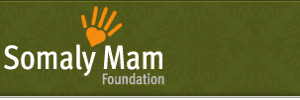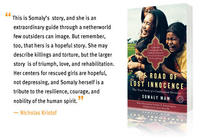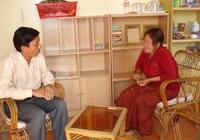Water is a Child’s Right

Cambodian girls hold up glasses of the before and after water at the M'Lop Tapang Center for Street Children.
A Child’s Right provides clean and affordable water to children in orphanages, street shelters, rescue homes, schools, and hospitals around the world. The organization recently partnered with The Somaly Mam Foundation to provide drinking water to all of our shelters. A Child’s Right is the only clean water organization with a narrow focus on impoverished, vulnerable and institutionalized urban children. Since its founding in 2007, A Child’s Right has provided clean water to over 250,000 children in five countries, and plans on expanding its services to thirteen countries over the next six years.
Eric Stowe, the Founder and Director of A Child’s Right, is the visionary behind the organization’s success. Like so many social entrepreneurs, Eric takes a hands-on approach, working on many of the installations himself and refining practices and technologies to address the unique needs of the populations that his team serves. It is his commitment and relentless focus on innovation that has resulted in the low cost, high-capacity systems that A Child’s Right is known for.
Somaly Mam Report – What was the spark that turned you into the social entrepreneur who launched A Child’s Right?
Stowe – I had been working in 11 countries in hundreds of orphanages prior to starting A Child’s Right. My focus then was on providing clean and safe water to orphaned and institutionalized children long term. In 2006, while working in Cambodia, I saw that the need encompassed so much more than what I was then focused on.
Children in the urban and peri-urban sphere are normally overlooked by water agencies. The organizations land in the capital city of a country and then travel to the remote corners of the country to provide first time water access to rural villages. Incredibly hard and amazing work, to be sure. But my focus was on the children in the cities without water; on sites with high concentrations of vulnerable children. So I turned my attention not only to orphanages, but also to poor schools, street shelters, rescue homes, clinics and hospitals. We opened our doors in January 2007, and have since opened offices in four countries serving more than 250,000 at-risk children potable water.
SMR – We have witnessed the positive impact that regular access to clean and affordable water has had on the lives of survivors at our shelters. What is one of the most memorable experiences that you’ve had in bringing clean water to children around the world?
Stowe – The best memories since my organization’s inception, and there are many, have been at rescue centers for trafficked women and children. Being able to provide just one very small piece toward the rehabilitation of the incredible survivors I have met, has lit a fire in me to begin initiating a much broader focus on rescue and rehabilitation centers within our larger mission. We currently work extensively with Maiti Nepal, and AFESIP/Somaly Mam Foundation in Cambodia. That is not enough. We want to focus on every reputable center in Southeast Asia doing work on behalf of survivors. It fits our mission, and we are working hard to make it a reality.
SMR – Does anything set ACR’s methods and technologies apart from other approaches to clean water?
Stowe – My initial vision was to ensure that every child we serve has water equal in quality to that which I give my own son – not similar, but equal. Cutting corners or only providing part of the water solution suggests that the people we serve deserve less. So we created a system that would attend to all the issues that cause waterborne diseases, while also ensuring high quality taste and providing high output flow. Everything is made in Chicago, transported to our country offices, installed by our staff, and overseen for years to come. It is a different approach in the water field. However, it’s important to recognize that no single approach will solve the global water crisis. It will take our collective efforts and methods to make a dent.
SMR – Which organizations are eligible for ACR’s help?
Stowe – Organizations working on behalf of vulnerable children: street shelters, orphanages, rescue homes, schools, clinics. We need access to a water source, whether it is municipal water, well water, pond or stream. We need at least some electricity to run our equipment. And, most importantly, we are looking for good organizations in developing countries that can benefit from the one thing that we specialize in: clean water.
For our online application, anyone can contact us at acr@achildsright.org

















Comments
Post new comment